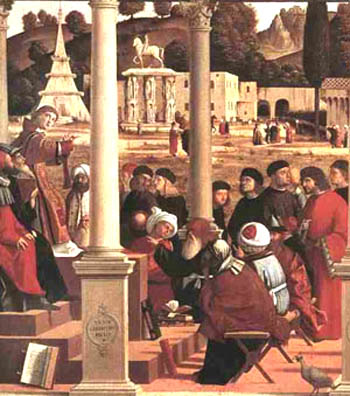
Another “guest post”, one might say:
It is no more imaginable that the British vice-regent of India should sentence a Hindu to death for expressing heterodox opinions about the teachings of Buddha, than it is that a Roman procurator should interfere on account of an accusation like the one made against Jesus, according to Mark 14:58 . . . and that he should do so in the face of admittedly conflicting evidence. He is reported to have said:
“I will destroy this temple that is made with hands, and within three days I will build another made without hands.”
The Gospel according to St. John takes this statement in a symbolic sense. Taken literally as it is in Mark, it does not seem to imply anything socially dangerous.
Let us suppose that a man of our own day should be accused of having said: “I will destroy Christiansborg [i.e. one of the principal royal palaces at Copenhagen, . . . occupied by the Rigsdag, the Supreme Court, and various government departments], but within three days I will build another palace of much greater spiritual beauty.”
The court would then first make sure that he had really said such a thing. Then it would inquire whether the defendant actually had taken any steps toward the material destruction of the palace. This not being the case, the matter would undoubtedly be dropped. Any inquiry whether steps had been taken toward the building of a heavenly Christiansborg may be regarded as quite out of the question. Continue reading “How not to get oneself crucified by Pilate”

 In his
In his 
 Continuing the series that is archived
Continuing the series that is archived 
